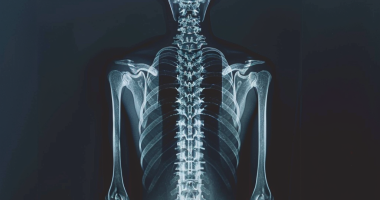Laryngeal cancer
What’s that?
Laryngeal cancer is a malignant tumor originating from epithelial cells.
About the disease
Laryngeal carcinoma, which develops from squamous epithelial cells, remains the most common malignant neoplasm of the head and neck region in many Western countries.
The location and extent of the tumor largely determine symptoms of laryngeal cancer. If the tumor is localized in the upper larynx above the vocal cords, painful swallowing sensations and the feeling of a foreign object are observed. An early sign of lesions in the fold section of the larynx is dysphony. When a tumor develops in the subclavian region of the larynx and spreads to the tracheobronchial tree, patients are concerned about difficulty breathing and dysphony.
Diagnosis of laryngeal cancer is based on clinical and anamnestic methods in combination with direct and indirect laryngoscopy and fibro-laryngoscopy. The necessary information is provided by radiation imaging (X-ray scanning, CT, MRI) to determine the localization and spread of the pathological process. The final diagnosis is based on a morphologic study of the removed biopsy specimen.
Conservative and surgical methods are used to treat malignant processes of laryngeal localization. Radio- and chemoradiotherapy, endolaryngeal laser surgery, photodynamic therapy, and open surgeries aimed at preservation of function are used in treating patients with stages T1-2 and some patients even at T3.
Types
According to the localization of the tumor in the organ in relation to the vocal cords, three variants are distinguished. The supracordal part of the larynx is more often affected – 50-70%, the cord part – in 30-40% of cases, and the infracordal part – in 3-5% of patients.
Histologically, laryngeal cancer comes in 2 types:
- Squamous cell cancer is the most frequent histologic variant. It is diagnosed in 95-98% of cases. A malignant tumor of this type may consist of keratinizing and non-keratinizing cells.
- Adenocystic cancer. It is formed from epithelial tissue cells lining the glands’ ducts. Adenocystic cancer is characterized by slow growth, invasion of cells along nerve fibers, and distant metastasis (more often to the lungs). The causes of the development of this malignant neoplasm are genetic predisposition and carcinogenic factors.
The stage of the pathological process is determined by the quantitative and qualitative characteristics of the primary tumor (T), the involvement of nearby lymph nodes (N), and the presence of metastases (M).
Symptoms of laryngeal cancer
The earliest symptom of a malignant tumor affecting the larynx is dysphony, and there is usually no metastasis. On the other hand, when the primary tumor is located in the supraglottic space, it may grow to a significant size before clinical symptoms appear, and metastasis to the collector lymph nodes is usually seen in this location and is, therefore, more common in later stages.
Symptomatology depends on which part of the larynx (in relation to the vocal cords) the malignant process develops.
- The most favorable prognosis for tumors in the subclavian space. The probability of metastasis is 5-10%. However, metastasis occurs more rapidly when the anterior commissure is affected and the lymphatic vessels between the thyroid cartilage and the ring cartilage are involved. An early manifestation of clinical symptoms, in particular dysphonia, allows detection of the lesion of the fold section at an earlier stage.
- The more malignant process occurs in the inter-ligamentous space, associated with abundant lymphatic vessels. At the same time, the initial stages of the disease are asymptomatic. Often, only when a large tumor is formed, there is choking, pain when swallowing, and a feeling that the ears are stuffed.
- Subclavian cancer is recognized late because the vocal cords are not involved in the pathological process at the initial stage. The reason to consult a doctor is usually difficulty breathing, which occurs when the tumor is large.
Causes of laryngeal cancer
The main risk factors are smoking and alcohol consumption. In addition, exposure to asbestos, industrial pollution, the presence of laryngeal cancer in first-line relatives, and insufficient intake of antioxidants contained in fresh fruits and vegetables play an etiologic role.
Most patients are over 40 years of age, with men affected more often than women.
The immediate causes of laryngeal cancer are associated with the appearance of cell mutations, as a result of which their uncontrolled multiplication begins. In such conditions, they do not differentiate, which is the characteristic of the malignant process.
Diagnosis of laryngeal cancer
The diagnostic program is based on anamnesis, patient examination, neck palpation, fibrolaryngotracheo- and esophagogastroscopy, computed tomography scanning of the larynx, trachea, lungs, esophagus, ultrasound of the neck, thyroid gland, pre- and paratracheal areas, abdomen, pelvis, as well as morphological examination of the primary process and metastatic foci. In addition, positron emission tomography combined with CT (PET/CT) and skeletal bone scintigraphy are performed when indicated. These studies allow us to detect areas of distant spread of tumor cells.
What laryngeal cancer looks like?
Based on what laryngeal cancer looks like, three forms of the disease are distinguished:
- exophytic, occurring in 20% of cases – the tumor grows into the lumen of the organ
- endophytic – the tumor affects the wall of the organ, practically not protruding into its lumen (21% of cases);
- mixed forms – occur in almost 60% of cases.
Laryngeal cancer treatment
The main methods of treatment for laryngeal cancer are radio- and chemoradiation therapy, as well as surgery. The choice of treatment program depends on the extent of the malignant process.
Conservative treatment
- Radiation therapy is most effective when the disease is detected at the first or second stage and avoids surgery.
- Different regimens are used in chemoradiation treatment. However, platinum drugs (cisplatin) with a course of remote γ-therapy are favored.
Surgical treatment
According to clinical guidelines, there are two main surgical options for laryngeal cancer:
- Organ-preserving surgery has evolved in 2 directions: endolaryngeal surgery using laser and microsurgical instruments and open surgery. Conservative laryngeal surgery (endoscopic laser or robot-assisted surgery, partial laryngectomy) is an excellent choice for patients with early-stage laryngeal cancer, providing reasonable oncologic control and not significantly impairing laryngeal function.
- Laryngectomy (complete removal of the larynx) provides excellent local control. Surgery is associated with significant functional and psychological consequences. In most cases, radiation or chemoradiation therapy is the treatment of choice for most patients with T3 tumors. Laryngeal excision is performed for advanced tumors with cartilage destruction and tumor recurrence after radiation therapy or chemoradiation.
All these treatment options are available in more than 800 hospitals worldwide (https://doctor.global/results/diseases/laryngeal-cancer). For example, endolaryngeal surgery is performed in 13 clinics across Turkey for an approximate price of $4.5 K (https://doctor.global/results/asia/turkey/all-cities/all-specializations/procedures/endolaryngeal-surgery).
Prevention
Prevention of laryngeal cancer is focused on smoking cessation and lifestyle modification. Persistent cough, voice deterioration after vocal exertion, and persistent voice changes in dysphony require in-depth examination, especially in men aged 50-59. Cancer screening is recommended for smokers at least once a year.
Rehabilitation after laryngeal cancer
Functionally preserved surgeries of any size are always accompanied by deterioration of vocal function, and all patients need specialized rehabilitation after laryngeal cancer. It consists of rehabilitation sessions aimed at strengthening the voice. The effectiveness of rehabilitation is higher at an early start, but in the case of radiation therapy, the start of exercises is postponed to a later period. Exercises are aimed at activating external muscles of the larynx, organization of phonation breathing, and a series of exercises.
After complete laryngeal removal surgery, voice restoration is possible using speech therapy techniques, voice-forming devices, and reconstructive surgeries. Laryngectomy with tracheo-esophageal bypass is performed using voice prostheses.




